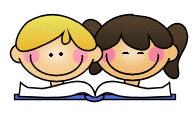



Miss. Marques
Daily 5

You may have heard your child talk about The Daily 5 or C.A.F.E. and have wondered what they were talking about. The Daily 5 is a framework used in our classroom to help students develop independent literacy habits. The Daily 5 is a series of literacy tasks which student complete while I meet with small groups of students or individual students. There are 5 tasks that students will complete in a Daily 5 rotation:
Read to Self
Read to Someone
Listen to Reading
Word Work
Work on Writing
The Daily 5 is a way of structuring the language block so every student is independently engaged in meaningful literacy tasks. These research based tasks are ones that will have the biggest impact on student reading and writing achievement , as well as foster a love for reading and writing. Students will receive explicit whole group instruction and are given independent time to practice while I provide focused, intense instruction to individual students or small groups.
There are very specific behaviour expectations that go with The Daily 5. We will spend our first few weeks working intensely on building our reading and writing stamina, learning the behaviours of The Daily 5 and fostering a classroom community. I will also spend time learning your child's strengths and greatest needs as a reader and writer in order to best plan for each student's instruction.





The most important thing we can do to become better readers is to spend lots of time practicing reading. Students have their very own Book Bins which are filled with "Just Right Books" to choose to read during Read to Self. Just Right Books ensures that students are reading books they are interested in, and at their own level so they can comprehend what they are reading independently. Students can choose anywhere in the room to read and are encouraged to read for the whole time. We have discussed three ways to read a book which students can choose to do during this time:
1. Read the words
2. Read the pictures
3. Retell the story
Reading to someone allows students more time to listen to fluent and expressive reading. Research shows that taking turns reading increases reading involvement, attention and collaboration. Kids love partner reading! You may hear your child talking about EEKK reading, this means students who are reading together are to sit beside each other elbow to elbow, knee to knee. This close proximity allows students to read quietly and still be able to hear their partner without disrupting the rest of the class.
When we think back to how children begin to talk, it is though hearing words. Exposing children to books on CDs, Storyline Online or Raz Kids allows students to hear fluent and expressive reading which will allow them to hear what good readers sound like.
Intense work in writing also supports reading development. Work on Writing helps students hone their skills as writers and their knowledge of words. During Work on Writing, students work independently on writing choices they choose in their Journals, write a comic, monthly writing topics, label it, strange stories, story starters, recounts, procedural, letter writing, mixed sentences etc.
Our word work will be based on each student's' independent word lists which has been differentiated based on each child's needs. During this time, students will experiment with words by creating words from their word lists by using rainbow colours, whiteboards, alphabet stamps, and bananagrams (word tiles). Students will be encouraged to write down the words they have created, and to create sentences using words from their individual lists.